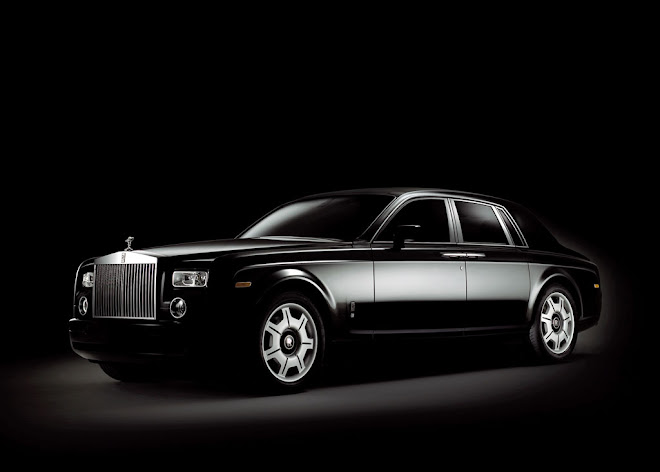
Ghost is the most powerful car that Rolls-Royce Motor Cars has ever produced. However, Rolls-Royce power is delivered in a very different manner to other cars. It arrives in an elegant, cosseting way that some have described as being designed to lower the pulse, not raise it.
The principle of simplicity extends to the act of driving Ghost. The host of complex engineering software and technologies beneath the surface serve to make driving easier and more enjoyable, not to intrude or confuse.
“Nothing should distract from the pleasure of driving Ghost.”
Helmut Riedl, Engineering Director
Ghost is more driver-focused than any Rolls-Royce car before it. The driver sits in a slightly elevated position behind the wheel, described as the authority position. This makes the view of the road much clearer. The fascia has been kept deliberately clear; it is spacious in design and has an intuitive layout. The controls are neatly sculpted, with the more important functions emphasised by accents of chrome. The soft light of the instrument panel glows through the familiar black-rimmed steering wheel, which in turn employs a number of violin keys as well as an ergonomic roller-ball control.
The control centre display is concealed behind a veneered panel until its services are called upon. All features such as satellite navigation, telephone, communication and entertainment functions are displayed here and managed via a central rotary controller, flanked by quick-access buttons on the front centre console.
The optional driver assistance systems and technologies in Ghost are notable for their discretion and ease of operation. From the moment the driver approaches the car, optional Comfort Entry** allows easy access, unlocking the doors when the key fob is within 1.5 metres and the cool chromed handle is grasped. Once you are in the car, voice control allows you to select from the control systems menus without using the central controller.
For ease of manoeuvring, cameras located around the car serve a number of purposes. Rear, front side and top view cameras can combine to give a fish-eye view at blind junctions or provide ground images with obstacle recognition and reverse path prediction when parking.
Positioned discreetly within the grille is a Night Vision** camera. When activated, this safety feature works with Pedestrian Recognition to detect objects up to 300 metres away and display them on the central screen in the dash. The car’s control system receives infrared heat images from the camera and, taking into account the car’s speed and direction, classifies them to assess imminent danger. It then determines what action, if any, needs to be taken and if necessary displays a warning to the driver.
The Head-up Display relays crucial information such as speed or navigation directions onto the windscreen directly in front of the driver. This information is visible only to the driver and can be tailored to show only the details required and at a position suitable to the driver.
Lane Departure Warning** alerts the driver should the car start to drift out of its current lane. When activated, it uses an integrated camera, located just in front of the rear view mirror, to monitor road markings and the vehicle’s position. The driver is warned by a discreet vibration through the steering wheel. If the driver uses the directional indicators before and after the lane change, the wheel will not vibrate.
High Beam Assistance** automatically manages the operation of dipped and main beam lights while driving at night. When activated, the same camera used by the Lane Departure Warning system monitors the light from any source at the front of the vehicle and automatically dips or raises the headlights accordingly. Adaptive, directional headlights also improve illumination of the road ahead and adapt to the road conditions, be they rain or fog or simply when the car is making a turn.
Active Cruise Control with Stop & Go** creates a relaxing driving experience, particularly on long cruising journeys, as action is not required when the car ahead speeds up or slows down, even when coming to a standstill. Active Brake Intervention** also allows hill descent at a constant speed and the car’s Curve Speed Limiter communicates with the car’s Dynamic Stability Control systems to reduce speed on bends if safety and comfort may be compromised.



No comments:
Post a Comment